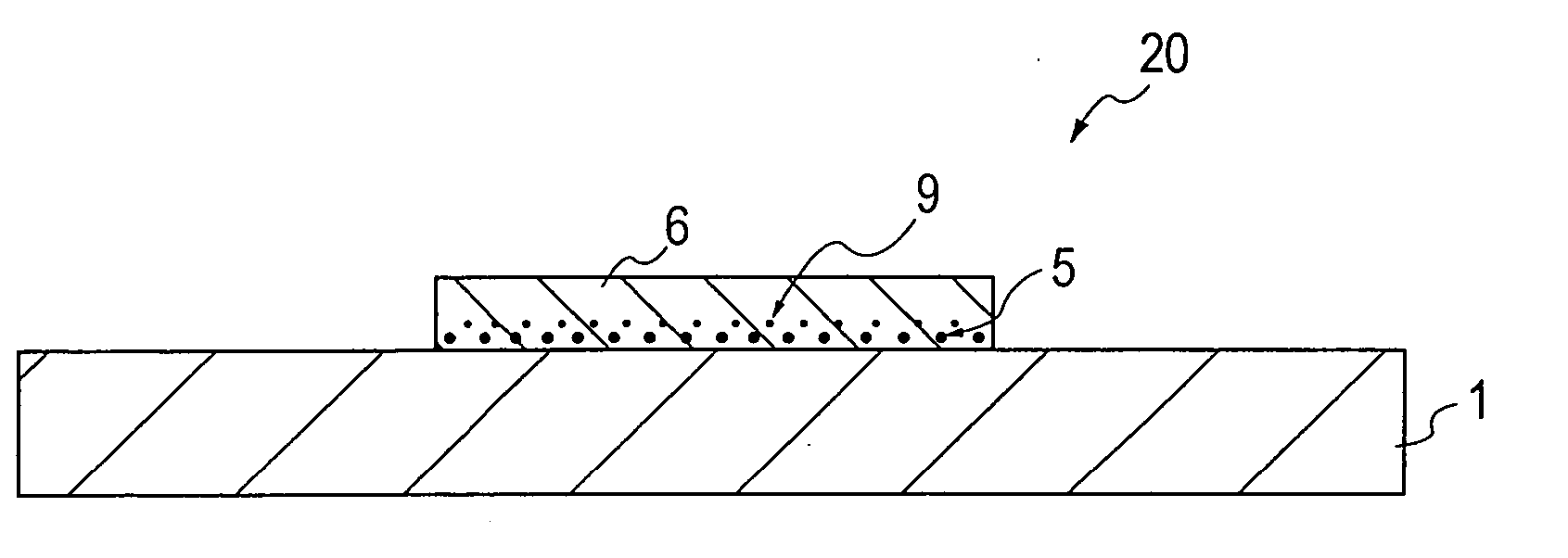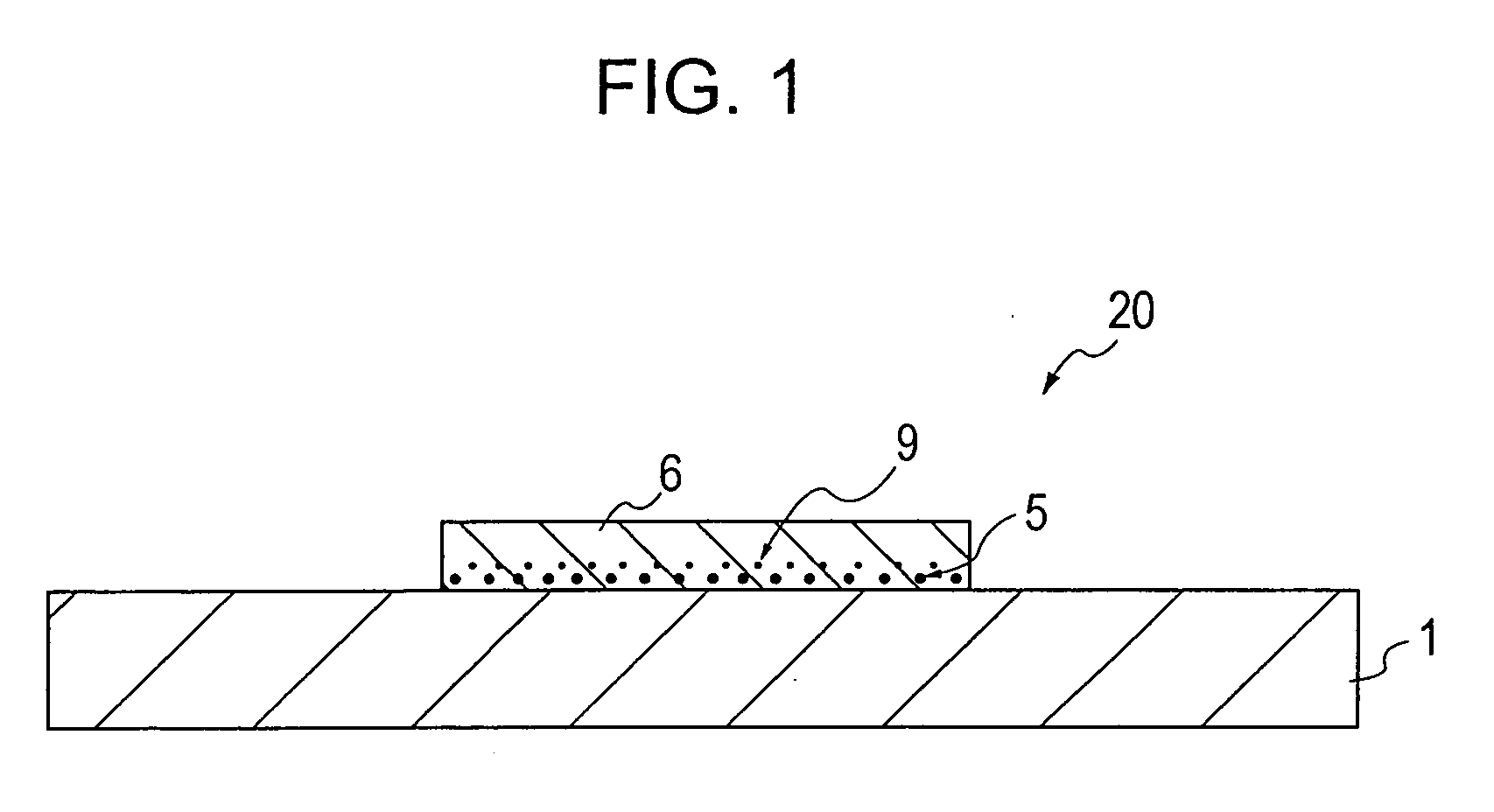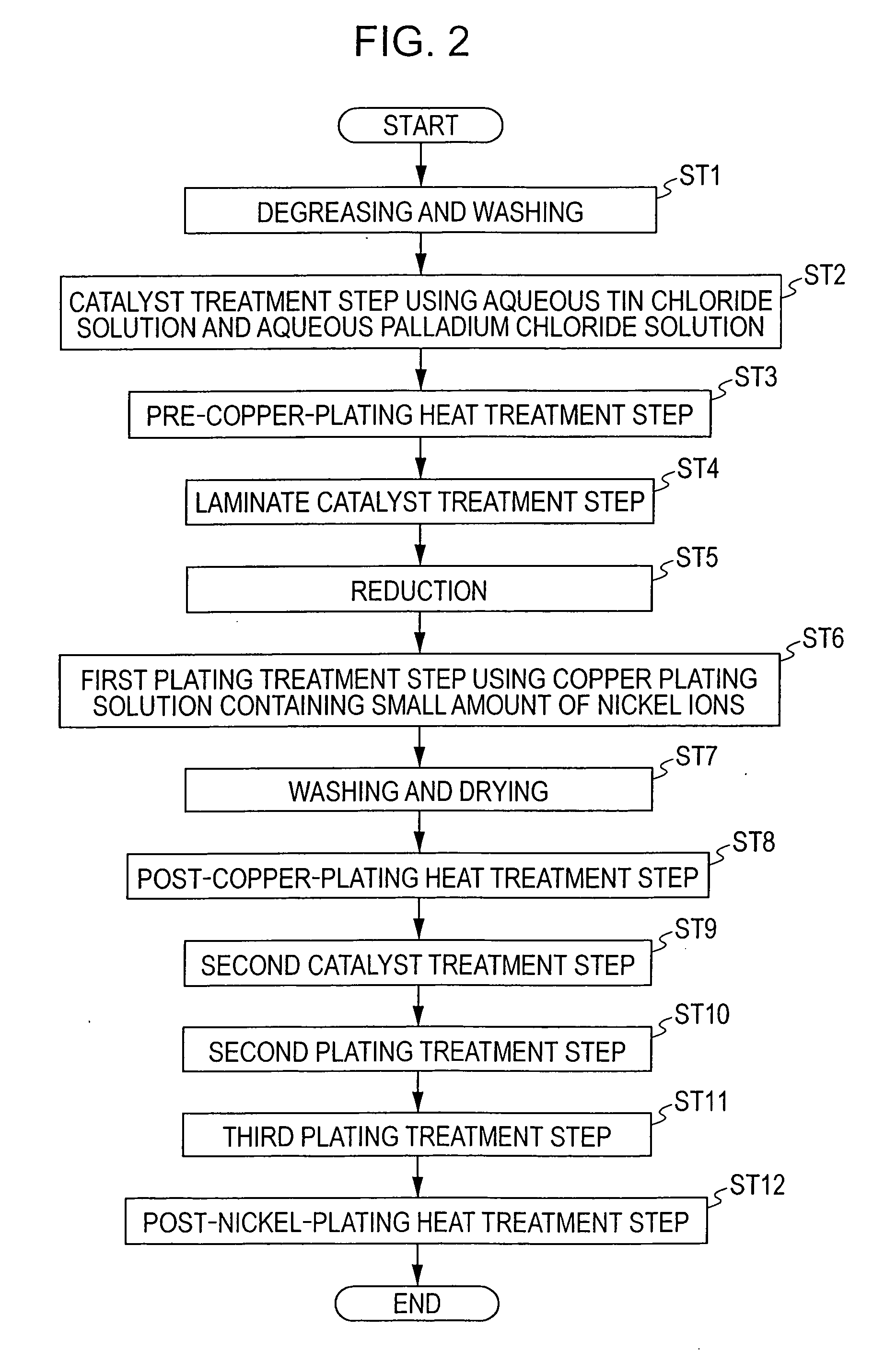Plating substrate, electroless plating method, and circuit forming method using the same
a technology of electroless plating and substrate, applied in the direction of transportation and packaging, chemical coating, liquid/solution decomposition, etc., can solve the problems of limiting the formation of fine pitch wiring patterns, affecting so as to improve the high frequency properties of the circuit and improve the gold plating film
- Summary
- Abstract
- Description
- Claims
- Application Information
AI Technical Summary
Benefits of technology
Problems solved by technology
Method used
Image
Examples
example 1
[0222] Approximately 50% of a borosilicate glass and approximately 50% of a fine alumina powder were mixed to form ceramic base materials each containing a glass component, and the ceramic base materials thus formed were degreased and washed.
[0223] Next, the ceramic base materials thus degreased and washed were immersed in the aqueous tin chloride solution of the first embodiment at 23° C. for 3 minutes, followed by sufficient washing with water. In addition, the ceramic base materials thus washed were then immersed in the aqueous palladium chloride solution described in the first embodiment at 30° C. for 2 minutes.
[0224] Furthermore, the ceramic base materials were again immersed in the above aqueous tin chloride solution for 2 minutes and then immersed in the above aqueous palladium chloride solution for 1 minute to form catalyst layers and were sufficiently washed with water, followed by drying.
[0225] Subsequently, as shown in Table 1, pre-copper-plating heat treatment was per...
example 2
[0236] Approximately 50% of a borosilicate glass and approximately 50% of a fine alumina powder were mixed to form a ceramic base material containing a glass component, and the ceramic base material thus formed was degreased and washed.
[0237] Next, after being applied onto a first and a second surface of the ceramic base material, a resist solution was processed by exposure and development using a predetermined mask so as to form resists having a predetermined pattern, followed by sufficient washing with water.
[0238] Subsequently, the ceramic base material was immersed in the aqueous tin chloride solution described in the circuit forming method using the electroless plating method of the first embodiment for 3 minutes, followed by sufficient washing with water. In addition, the ceramic base material thus washed was then immersed in the aqueous palladium chloride solution described in the first embodiment for 2 minutes.
[0239] Furthermore, the ceramic base material was again immers...
example 3
[0249] Ceramic base materials containing a glass component, which were each formed of approximately 50% of a borosilicate glass and approximately 50% of a fine alumina powder and which were each provided with Ag-based vias therein, were degreased and washed using a degreasing agent containing sodium hydroxide, a carbonate, a phosphate, and the like.
[0250] Subsequently, ceramic base materials were immersed in the aqueous tin chloride solution described in the second embodiment at 23° C. for 3 minutes, followed by sufficient washing with water. In addition, the ceramic base materials thus washed were then immersed in the aqueous palladium chloride solution described in the second embodiment at 30° C. for 2 minutes. Furthermore, the ceramic base materials were again immersed in the above aqueous tin chloride solution for 2 minutes and were then immersed in the above aqueous palladium chloride solution for 1 minute to form catalyst layers, followed by sufficient washing with water and ...
PUM
| Property | Measurement | Unit |
|---|---|---|
| temperature | aaaaa | aaaaa |
| temperature | aaaaa | aaaaa |
| temperature | aaaaa | aaaaa |
Abstract
Description
Claims
Application Information
 Login to View More
Login to View More - R&D
- Intellectual Property
- Life Sciences
- Materials
- Tech Scout
- Unparalleled Data Quality
- Higher Quality Content
- 60% Fewer Hallucinations
Browse by: Latest US Patents, China's latest patents, Technical Efficacy Thesaurus, Application Domain, Technology Topic, Popular Technical Reports.
© 2025 PatSnap. All rights reserved.Legal|Privacy policy|Modern Slavery Act Transparency Statement|Sitemap|About US| Contact US: help@patsnap.com



